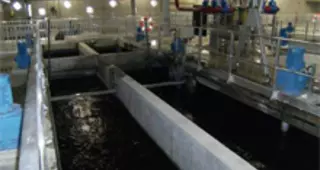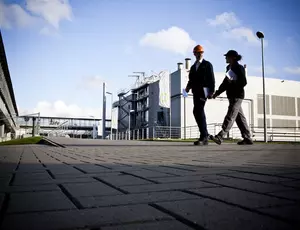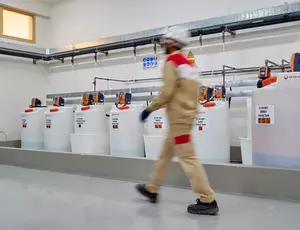Emerging pollutants such as pharmaceutical residues, per- and polyfluoroalkyl substances (PFAS) and microplastics are understandably generating public concern owing to health and environmental issues such as bioaccumulation. As a result, regulations are becoming stricter, and industries and municipalities alike are facing greater challenges in managing and treating these toxic substances. At Veolia Water Technologies, we play a crucial role in addressing this issue by developing and implementing cutting-edge technologies and treatment processes to reduce water pollution and micropollutant contamination.
Micropollutant treatment is the process of reducing the concentration of micropollutants — such as pharmaceutical residues, pesticides or PFAS that are detectable in the environment even at low concentrations (micrograms or even nanograms per liter) — from various environmental sources, such as water and soil, in order to reduce the adverse effects on the environment, wildlife and human health.
Several entities and sectors may require micropollutant treatment, such as municipal and industrial wastewater treatment plants that need to reduce micropollutants before they’re able to discharge their water. The treatment of micropollutants in drinking water is also an area of concern for local authorities. Those in pharmaceutical, science and healthcare markets may generate micropollutants from the use of certain drugs and chemicals that require proper treatment before disposal. And, of course, those in the chemical processing, microelectronics, and food and beverage sectors.
Micropollutant treatment plays a crucial role in protecting human health and the environment, by ensuring drinking water as well as municipal and industrial wastewater standards are met, maintained and regularly monitored. As well as helping to limit the spread of these toxic substances, micropollutant treatment also helps reduce:
- Water loss due to water pollution
- Costs owing to simplified waste disposal
How we help our clients treat micropollutants.
Micropollutants are often difficult to detect and reduce from water sources due to their low concentrations and complex nature. And since dissolved pollutants cannot be seen they are often considered the invisible water crisis.
Our experts are committed to finding water treatment processes to reduce water pollution contamination in order to
- Protect the environment
- Safeguard human health
- Meet stringent regulations
- Address consumer concerns

The City of Lausanne will soon be equipped with a drinking water plant unique in Switzerland and Europe to treat micropollutants. Using a combination of advanced technologies, the plant will produce drinking water that exceeds regulatory requirements

Situated in North Rhine-Westphalia, central Germany, on the river Diemel, the wastewater treatment plant (WWTP) of Warburg receives municipal and industrial wastewater. To reduce the discharge of toxic substances, the customer upgraded its WWTP with an advanced ozonation treatment. However, ozonation only partially oxidizes micropollutants and, as a result, ozonation transformation products (OTPs) with unknown properties can be formed. To minimize the risk of releasing unknown and potentially toxic OTPs into surface water, our experts installed a biological post-treatment after the ozonation step. This advanced treatment proved to be highly efficient in the treatment of micropollutants and ozonation transformation products. As a result, a second plant was built in Rheda-Wiedenbrück with the same process scheme.
Discover our technologies for micropollutant treatment
Would you like more information about our technologies for treating micropollutants?
Acting against micropollutants is a priority shared by all of our teams, researchers and experts. The solutions we develop aim to anticipate future standards for the treatment of micropollutants. New micrograin-type activated carbons have made it possible to develop technologies with very high environmental performance, low in energy and reagents, and these technologies are already implemented in drinking water plants.

Christophe Sabourdy
Drinking water expert, Technical Department
More services for our clients to treat micropollutants
FAQ about micropollutants treatment
What are micropollutants?
Micropollutants are a category of pollutants that refer to a wide range of organic and inorganic substances found in low concentrations in the environment. These substances are not typically monitored or regulated, but they can have adverse effects on human health and the environment.
What is causing micropollutants to enter our waterways?
Micropollutants can originate from various sources, including industrial processes, agricultural activities, pharmaceuticals, personal care products and household chemicals — everything from cleaning detergent to shampoo. They often enter the environment through wastewater discharges, runoff and atmospheric deposition.
Why are micropollutants an area of growing concern?
The concern lies in their persistence, bioaccumulation and potential long-term effects on aquatic ecosystems and human health. Even at low concentrations, substances such as PFAS can still impact ecological balance. Therefore, there is increasing awareness and monitoring to understand the presence of micropollutants in the environment and to mitigate their potential impacts. Advanced wastewater treatment technologies, improved industrial practices, and public awareness are some of the strategies being employed to tackle the issue of micropollutants.








